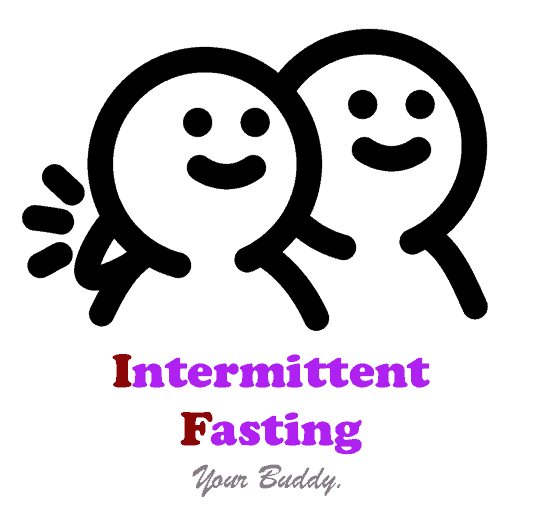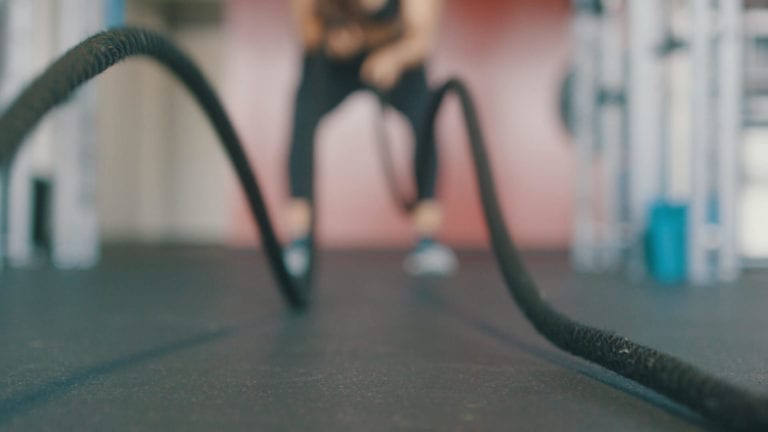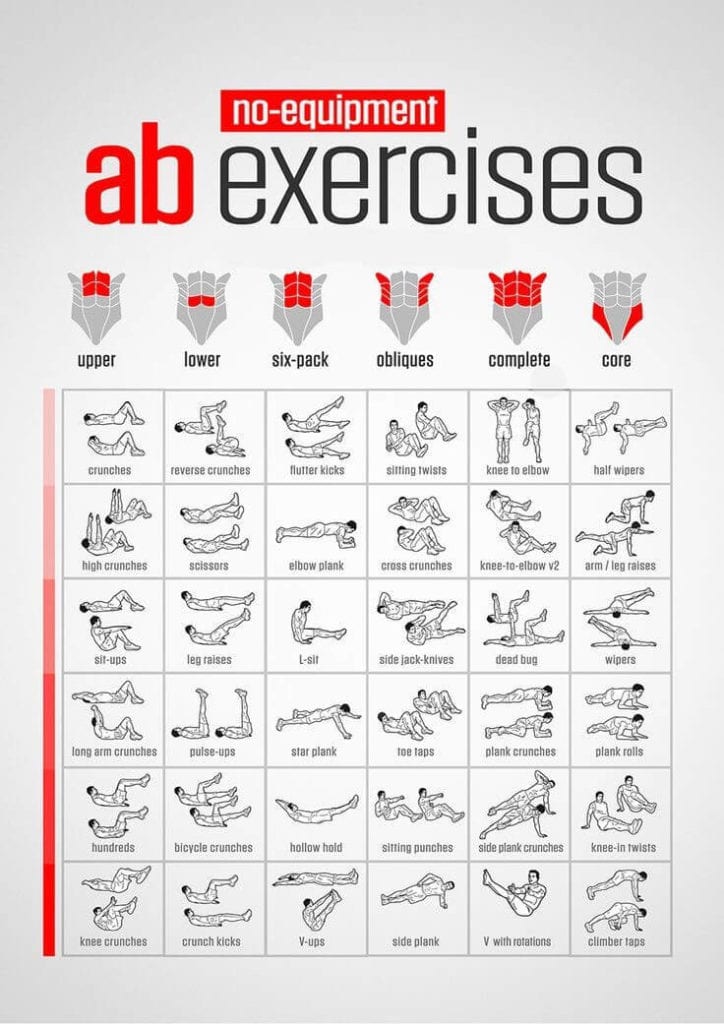Working out fasted is a very debated topic on fitness blogs, especially when it comes to combining intermittent fasting and HIIT. While some claim that it will help you lose fat quicker, other people are of firm conviction, that there is no difference in working out in a fed state. To dispel all speculation and myths, I have read some studies, done thorough research, and can now safely say: HIIT workouts in a fasted state are safe and even recommended. Multiple studies have proven that you can burn more fat if your workout is done in a fed state.
Let’s dig into this controversial topic to find out exactly why.
What is HIIT?
A HIIT (High-Intensity-Interval-Training) can be done in different forms, but generally speaking, it follows the same routine. Basically you do a high-intensity exercise, followed by short recovery time. This gets repeated a couple of times. While these workouts are pretty intense, they are really quick and can be easily done in the morning.
According to Lowery and Bridger, HIIT should only be done three times a week. This because it is so exhausting. It puts a strain on your nervous system, joints, and muscles; especially if you are overweight and overall rather unfit.
Example workout
A beginner workout could look something like this: you work out at 85-90% of your maximum heart rate (really hard) but only for maybe 30 seconds. After that, you take a break for 20 seconds.
You can calculate your max heart rate by subtracting your age from 220.
Running
Usually, we start with a warm-up: Jogging (3 minutes)
After that, we start with the Intervals:
- Exercise: Run nearly as fast as you can for 30 seconds at 85-90% of max. heart rate
- Rest: 60 seconds at 60% of max. heart rate
- Repeat
Abs workout
Start with a little stretch and some sit-ups to warm-up.
After that, we start with the Intervals:
| Time | Exercise |
|---|---|
| 30 seconds | plank |
| 15 seconds | rest |
| 30 seconds | leg raises |
| 15 seconds | rest |
| 30 seconds | scissors |
You get the idea. Now go ahead and add more exercises from the sheet below.
Combining HIIT and intermittent fasting
Now we can go ahead and combine these two things. Since most people are in a fasted state until around noon, you probably want to include your HIIT workout in the morning. The idea behind this technique is, that because your body has no carbohydrates available to burn for energy (since you’re in a fasted state), your body has to burn away stored fat. This happens in a very efficient manner.
Now, you want to make sure to keep your HIIT workouts short. Not super short, but you shouldn’t overdo it or you might risk some unpleasant side effects. Working out intensely on an empty stomach can make you feel dizzy and might even make you faint. I find it easier to work out in the morning when I drink a lot of water first.
There has been a study with 28 healthy men, that proved, that by combing Intermittent Fasting and HIIT, you will burn more fat.
The participants were split into three groups.
- The first group exercised in a fasted state and consumed a high carb breakfast after the workout.
- A second group did the same as the first group but drank sugary drinks during the workout.
- And a third group ate the same but did not exercise
The results speak for themselves: Only group 1 did not gain weight and showed no signs of insulin resistance. This proves, that working out in a fasted state is effective.
Why does it work?
The combination of intermittent fasting and HIIT maximizes cellular factors and catalysts, which forces a breakdown of fat and glycogen for energy. Glycogen consists mainly of carbs. When we fast overnight, we lose a lot of Glycogen. When we are low on Glycogen, your body starts using fat for energy – and this is where the fat gets burned.
Another big contributor is the human growth hormone (HGH). Fasting can trigger an incredible increase of HGH, which will then lead to more fat loss and overall more muscle growth. A study supports this theory. They proved, that if you fast for 24 hours, men can see an increase of 2000% of the HGH, where women see an increase of 1300%. This is A LOT and will force the body to burn fat.
Another study implies, that when you’re in a fasted state, blood flow in the abdominal region is increased. This will lead to an insane loss of belly fat, especially when combined with HIIT.
Working out fasted vs fed
A study published in 2019 compared these two things. They proved, that working out fasted promotes increased reliance on burning fat for fuel. This effect was not seen, when the participants consumed a high-carb breakfast right before the exercise. Note, that both groups burned the same amount of calories – just the energy from where it came from was different. Furthermore, insulin was more efficient and effective when people did not consume breakfast before exercising.
Working out in a fasted state
Working out fasted can challenge your body if you do long, intense workouts. While lifting weights can be done and is generally considered to be OK, your workout should always be followed directly by a protein-rich meal. This is because your body gets stressed when working out and wants an immediate refeed.
Working out in a fed state
Although there are a lot of benefits with fasted training, fed training should not be completely excluded. If your focus is on bodybuilding and gaining muscle mass, you should consider working out in a fed state. A simple benefit is that you’ll be glucose driven and use more carbs.
HIIT while fasting
Is it healthy?
As mentioned above, including a HIIT workout in the morning is healthy, as long as it is not too long. An average HIIT workout is anything between 5 minutes and 20 minutes. So take it slow and test out what works for you. If done correctly, you don’t need a post-workout meal.
In case you feel weak or not good after your workout, you should eat something small before – like 1/2 of a banana. This can provide enough carbohydrates to fuel your workout and hinder any blood sugar related issues. While you’re technically breaking your fast, you will minimize the chance of feeling sick or fainting.
Is there a muscle loss during fasting?

While working out during a fasted state can make your body a crazy “fat burner”, it can also decrease your strength. In case your main goal is to lose weight and you don’t care about muscles, then you don’t need to worry about anything.
In case you want to maintain muscle, you really need to make sure that your workouts are short and low-intensity. Otherwise, you might start seeing a decrease of muscle mass.
Why do some people not recommend it?
Most people do not specifically advise against doing Intermittent Fasting and HIIT. They rather advise against doing a hard workout in a fasted state. It should also be noted that most studies have only tested a short duration, and possible negative long-term effects are uncertain.
To wrap it up…
For a healthy lifestyle, I highly recommend including some fasted exercises in the morning. Heavy lifting can be done in a fasted state, but should always instantly be followed by a post-workout meal or a whey protein shake.
Just remember: your body is unique, and you have to test things out. Some things might work better for others than for you, so make sure you listen to your body and do what feels best.
If you feel weird, faint, sick, or get tired fast, eat half of a banana before working out. While this will break your fast, you can go ahead and workout safely. Make sure to ignore that little bit of food and continue your fast until you hit your feeding window. That way you will still consume fewer calories over the day.



6 thoughts on “Intermittent Fasting and HIIT – The Perfect Combo For Fat Loss (science backed)”